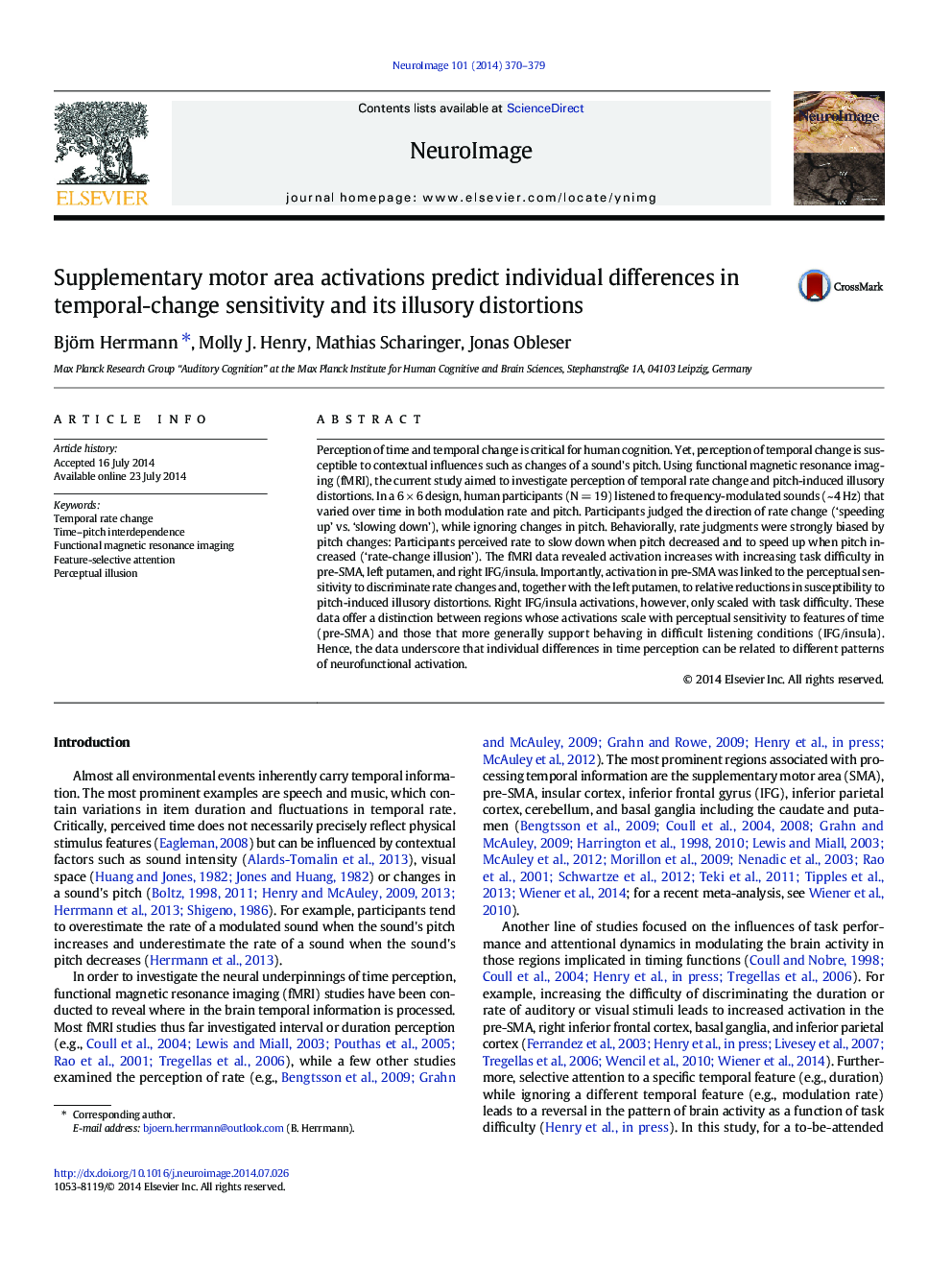| کد مقاله | کد نشریه | سال انتشار | مقاله انگلیسی | نسخه تمام متن |
|---|---|---|---|---|
| 6026325 | 1580905 | 2014 | 10 صفحه PDF | دانلود رایگان |
- We investigate neural correlates of (mis-)perceiving temporal rate change.
- Rate-change judgments were biased by changes in a sound's pitch.
- Pre-SMA activation predicts individual differences in rate-change sensitivity.
- Pre-SMA and putamen activations mark susceptibility to illusory distortions.
Perception of time and temporal change is critical for human cognition. Yet, perception of temporal change is susceptible to contextual influences such as changes of a sound's pitch. Using functional magnetic resonance imaging (fMRI), the current study aimed to investigate perception of temporal rate change and pitch-induced illusory distortions. In a 6Â ÃÂ 6 design, human participants (NÂ =Â 19) listened to frequency-modulated sounds (~Â 4Â Hz) that varied over time in both modulation rate and pitch. Participants judged the direction of rate change ('speeding up' vs. 'slowing down'), while ignoring changes in pitch. Behaviorally, rate judgments were strongly biased by pitch changes: Participants perceived rate to slow down when pitch decreased and to speed up when pitch increased ('rate-change illusion'). The fMRI data revealed activation increases with increasing task difficulty in pre-SMA, left putamen, and right IFG/insula. Importantly, activation in pre-SMA was linked to the perceptual sensitivity to discriminate rate changes and, together with the left putamen, to relative reductions in susceptibility to pitch-induced illusory distortions. Right IFG/insula activations, however, only scaled with task difficulty. These data offer a distinction between regions whose activations scale with perceptual sensitivity to features of time (pre-SMA) and those that more generally support behaving in difficult listening conditions (IFG/insula). Hence, the data underscore that individual differences in time perception can be related to different patterns of neurofunctional activation.
Journal: NeuroImage - Volume 101, 1 November 2014, Pages 370-379
